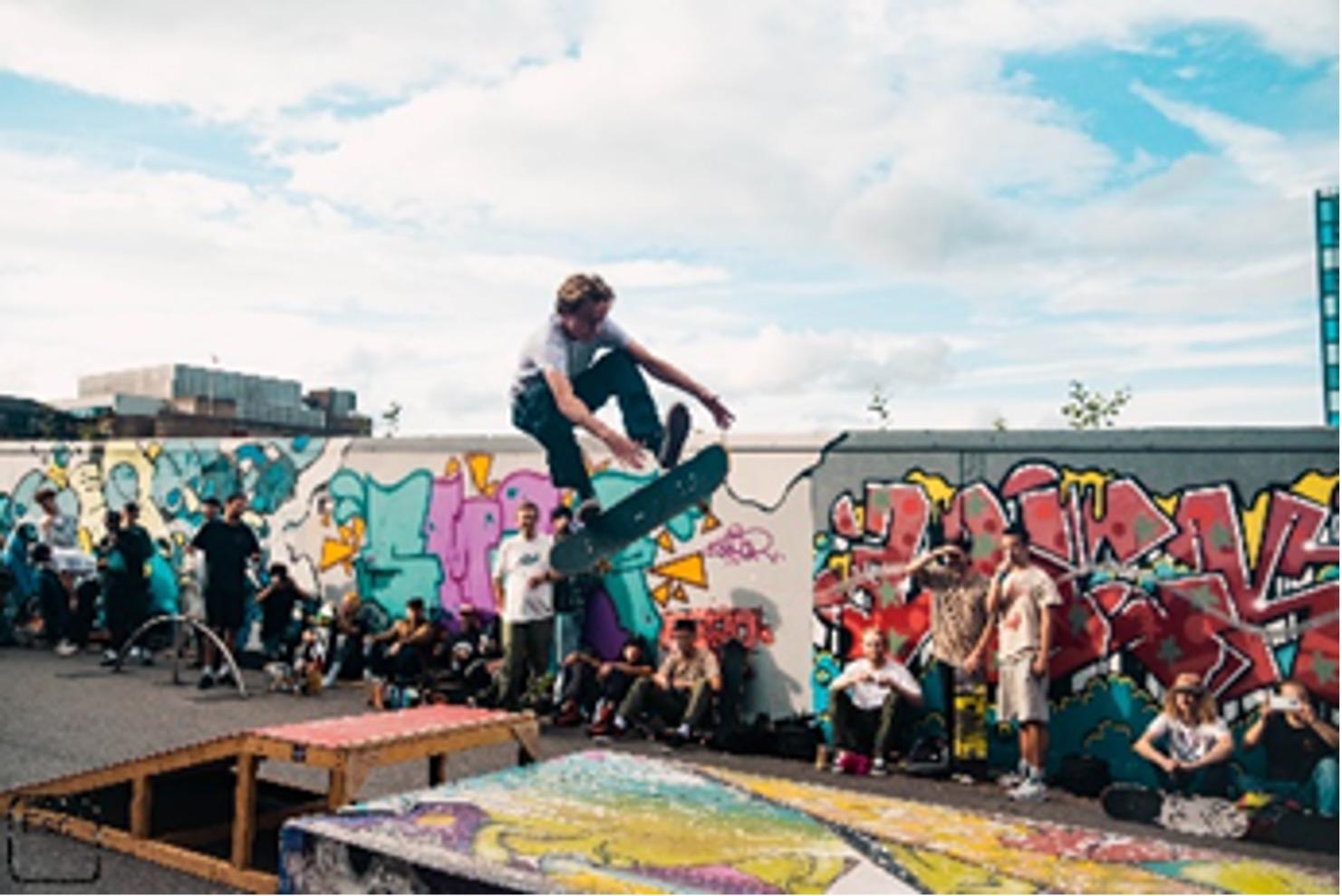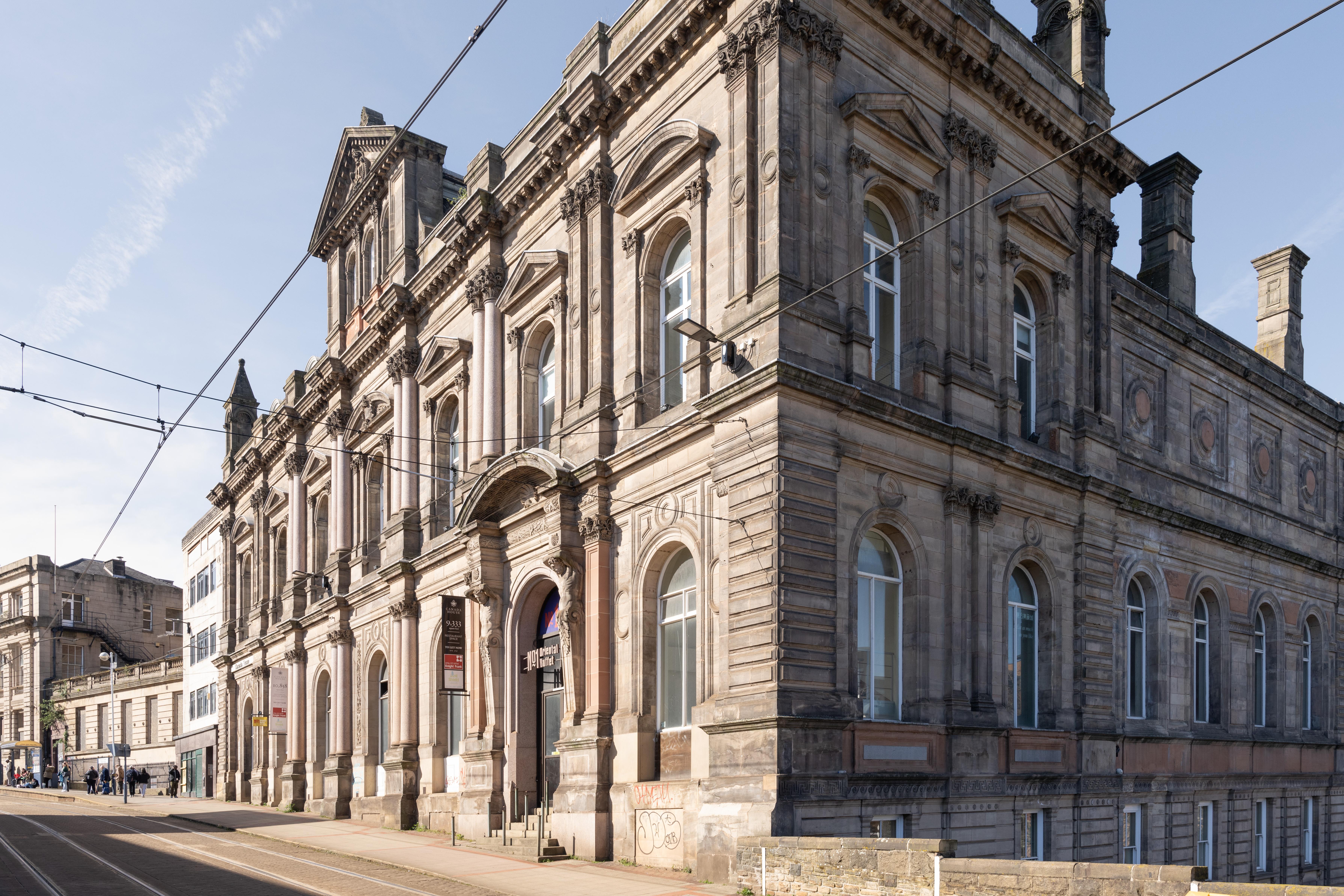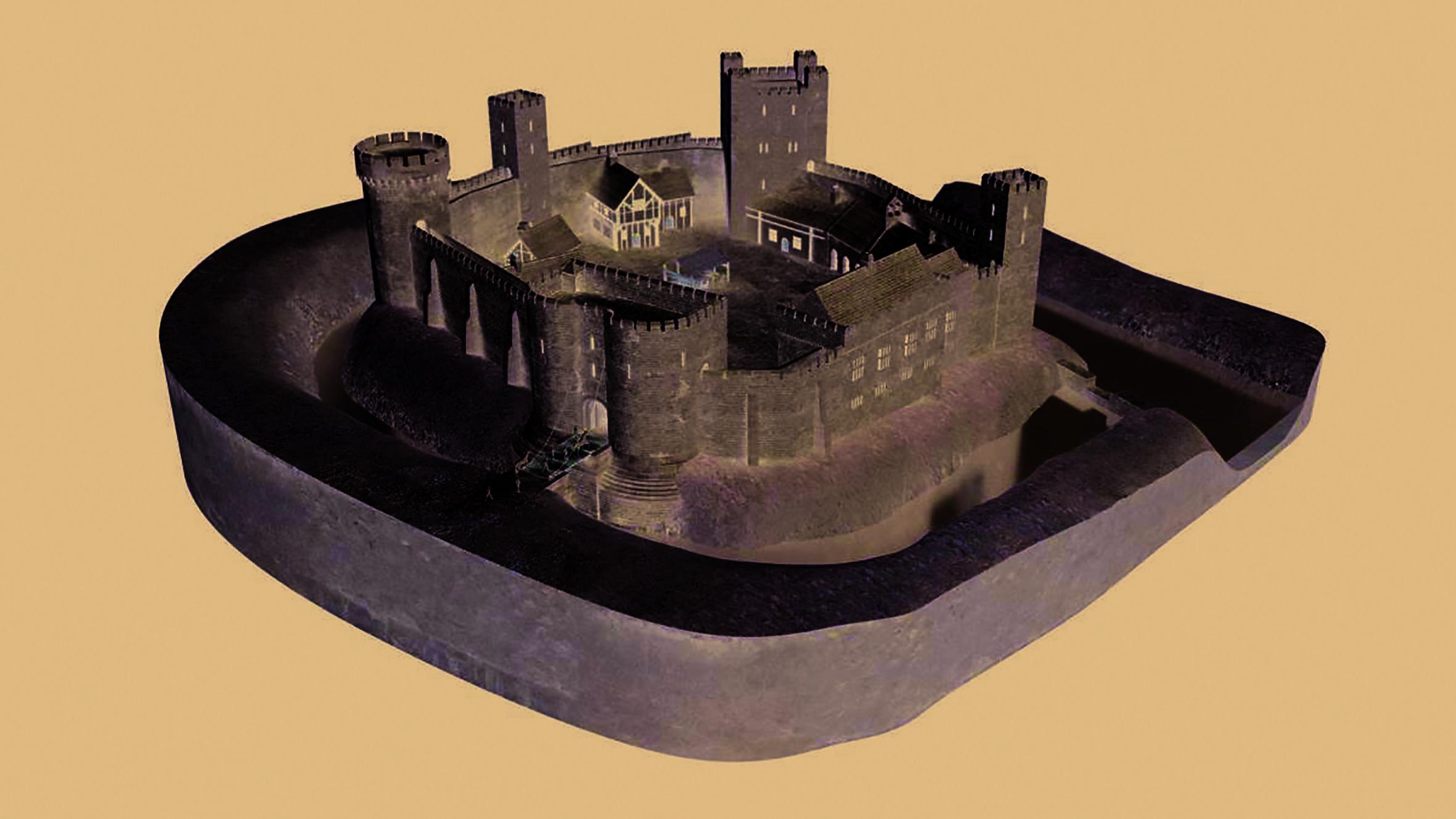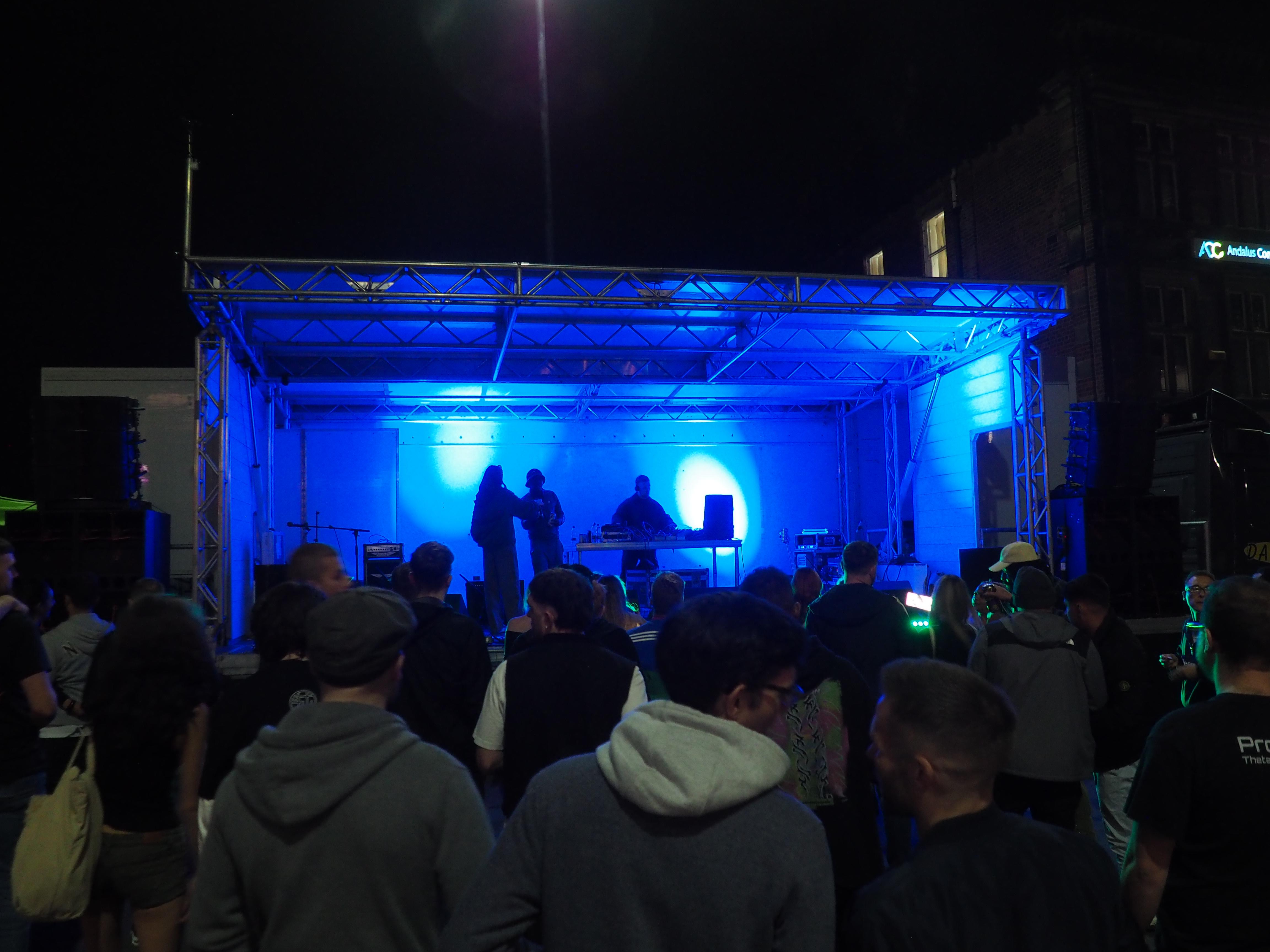
Castlegate Festival, September 2025
The SI Artspace tour and Haymarket exhibition on 18 and 21 September have been cancelled due to safety concerns. There will be some public consultation on the Stage 2 designs for the building’s restoration. Sign up to our newsletter for updates.
Welcome to the ninth edition of the Castlegate Festival – bigger and better than ever! The festival's events this year are on:
- Saturday 13 and Sunday 14
- Saturday 20 and Sunday 21
- other dates in September, which are featured on this page
Castlegate Festival is a celebration of heritage as well as the rich arts, music and market scene in Castlegate, Sheffield’s oldest quarter, including:
- Grey to Green
- Pollen and Quayside Market
- Quayside Markets
- Exchange St independent music venues
- Harmony Works
- Arts Catalyst and S1 Artspace
- SADACCA
This year’s festival also looks to Castlegate's future with the redevelopment of one of its key site. The Castle Site (previously occupied by the Castle Market until its demolition) as a unique new park for Castlegate.
It will include Sheffield Castle’s archaeological remains, the river Sheaf daylighted and an exciting event space as well as opportunities for play.
If you don’t know the area, or haven’t been for a while, please join us for this year’s festival celebrations. We have a more colourful programme this year as well as a map of the area and festival venues in our leaflet.






Festival Programme
Saturday 13 September
We have several events on Saturday 13.
Quayside Market at Victoria Quays
Day 1: Midday to 9pm
Plenty of family-friendly fun at Quayside Market with:
- award-winning street food
- artisan stalls
- live music
- free bike servicing by Sheffield Community Bike Project
- pop-up bar
You can see more on the Quayside Instagram page.
Make it! Play it! at National Videogame Museum
10am to 1pm and 2pm to 5pm
Learn how to:
- create a stop motion animation video
- model building with LEGO and clay
- showcase digital skills
More information is at the National Videogame Museum.
Urban Room at Harmony Works
11am to 5:30pm
Come to see the magnificent Harmony Works at Canada House to engage in the past, present and future of the building and Castlegate. No need to book.
Children’s crafts at Gallery 24/Two and Six Micropub
Midday to 4pm
Arts and crafts for younger children 3-to-8-years-old, but all ages are catered for. Check Two & Six Micropub for more information. This event will also run on Sunday 21 September.
Home Making Exhibition at Arts Catalyst (Exchange Place Studios)
3pm to 6pm
Artist Sahra Hersi and Sofia Niazi explore how co-operation can forge a sense of purpose and belonging. In collaboration with Al-Andalus Community Centre. You can learn more about it on Arts Catalyst.
Tours of the Castle Site (Sold Out)
Archaeology and River Sheaf: 4 tours on the Saturday
There is an alternative event, Guided Walks, on Sunday 21 September.
Led by Wessex Archaeology, Friends of Sheffield Castle and Sheaf and Porter Rivers Trust. Book through Heritage Open Days.
Sunday 14 September
On Sunday 14, we have events from the morning to the afternoon.
Quayside Market at Victoria Quays
Day 2: 11am to 4pm
There's plenty of family-friendly fun at Quayside Market with:
- award-winning street food
- artisan stalls
- live music
- free bike servicing by Sheffield Community Bike Project
- pop-up bar
You can see more on the Quayside Instagram page.
Make it! Play it! at National Videogame Museum
10am to 1pm and 2pm to 5pm
Learn how to:
- create a stop motion animation video
- model building with LEGO and clay
- showcase digital skills
More information is at the National Videogame Museum.
Urban Room at Harmony Works
11am to 5:30pm
Come to see the magnificent Harmony Works at Canada House to engage in the past, present and future of the building and Castlegate. No need to book.
Printmaking taster sessions at Carousel Print Studio (Exchange Place Studios)
Midday to 3pm
Drop in, no need to book. For adults and children aged 4+ under adult supervision at Carousel Print Studio.
Sticht and Spill with Aya Haidar Workshop at Arts Catalyst (Exchange Place Studios)
2pm to 4pm
Free embroidery workshop, exploring the concept of home, place and memory. No experience needed. Open to everyone. Please book on Eventbrite.
Tours of Harmony Works at Canada House
Midday, 2pm and 4pm
To check details and pre-book free tours on Harmony Works.
Tours of the Castle Site at Archaeology and River Sheaf (Sold Out)
4 tours on the day
Led by Wessex Archaeology, Friends of Sheffield Castle and Sheaf and Porter Rivers Trust. Book through Heritage Open Days.
Saturday 20 September: Turn up the Volume on Castlegate
If you’re interested in music, Saturday 20 is a one-day free event you can’t miss.
4 venues: Saturday 10:30am to Sunday 6am
Join us for:
- community Family Friendly Street Party
- live music / DJs (disco / hip hop / reggae / electronic / classical and more)
- African/ Caribbean Market
- skating competition
- Music In the Dome
Venue 1: Exchange Street
Free tickets for the Exchange Street events can be found on Fatsoma.
On Exchange Street
- 2pm to 5pm; Skateboard GB's Skate Jam and cash for tricks
- 2pm to 10pm; family friendly activities, street food and licensed bar
Main Stage
On the Main Stage at Exchange Street:
- 2:45pm to 4pm; Ritetrax Showcase
- 4:30pm to 5pm; FFFINOS
- 5:15pm to 5:45pm; TRAX
- 6:15pm to 6:45pm; Goldivox
- 7pm to 7:45pm; Aziza Jaye and DJ Kyla C
- 8:05pm to 8:50pm; Franz Von, powered by Raze Soundsystem
- 9pm to 10pm; Coco
Plot 22
Plott 22 is an indoor venue, and entry is for over 18s only:
- 10pm to midnight; Dave Haslam
- midnight to 1am; Overmars
- 1am to 2:30am; Nora
- 2:30am to 3:30am; Adam C04
- 3:30am to 5am; Paradise Squared
- 5am to 6am; Plot 22 Residents
Delicious Claim
This is an indoor venue, and entry is for over 18s only:
- 8pm to 8:30pm; The Xoxos
- 9pm to 9:30pm; Pohl
- 10:15pm to 10:45pm; Sister Wives
- 11:15pm to midnight; Reptile B
- 12:15am to 1am; Gloop
- 1am to 2am; Yanny B2B Suki SOS
Panke Social
This is an indoor venue, and entry is for over 18s only:
- 10pm to 11pm; Daftwerk
- 11pm to midnight; Jae Depz
- midnight to 1:30am; Jay Carder
- 1:30am to 3am; Cicely
- 3am to 4am; Lunar
- 4am to 5am; Dunum
Venue 2: Canada House, Commercial Street
- 10:30am to 11am; Canada House Tour (ground floor only)
- 11am to 5:30am; Urban Room – past, present and future of Canada House and Castlegate
- midday to 1pm; Music in the Dome
Venue 3: SADACCA at 48 Wicker
A lot is on at SADACCA:
- 11am to 6pm; market and African/Caribbean food; fashion workshops and show; free eye checkup for elderly residents
- 2pm to 3pm; Concerteenies Beatbox Rave Party – James Lyons
- 6pm to 6:30pm; open mic
- 7:30pm to 9pm; live music local African heritage artists
- 10pm to 1am; after party dance with DJ and live entertainment
Venue 4: Arts in the right Place at 38 Haymarket
Several creative events are at Arts in the Right Place:
- 1pm to 6pm; Arts and makers market, Lucky Dip, tombola, Find the Treasure and other children activities, live music, hot vegan food, snacks and drinks
- 1:30pm to 3:30pm; Geometric Clay Creations
- 3:45pm to 5:30pm; print making for 8 to 14-years-old and adult free sessions
- 9:30am to late; Sounds from the world
Sunday 21 September
There are events and activities on Sunday 21.
Pollen Market at Castlegate (Grey to Green)
10am to 4pm
Celebrate Pollen’s fourth birthday with a great line up of:
- florals
- food
- live music
- family entertainment
- Natural Symphony – an award-winning sound and light artist who uses the biorhythm of plants to create live electronic music and art
Visit Pollen Inner-City Flower Market on Instagram for more information.
Past, present and future of Castlegate and its rivers: Guided walk
11am to 2pm
Led by Sheaf and Porter Rivers Trust, walk around the 900 years of Castlegate, the oldest of the city’s quarters. Progress to the current project to reveal the remains and open up the lost river Sheaf. Book on Eventbrite.
Urban Room at Harmony Works
11am to 5.30pm
Come to see the magnificent Harmony Works at Canada House. Drop in to engage in the past, present and future of the building and Castlegate.
Printmaking taster sessions at Carousel Print Studio (Exchange Place Studio)
Midday until 3pm
Drop in – no need to book. For adults and children aged 4+ under adult supervision.
Children’s crafts at Gallery 24/Two and Six Micropub
1pm to 4pm
Arts and crafts for younger children 3-to-8-years-old, but all ages are catered for. Check Two & Six Micropub for more information.
Other Castlegate Festival events in September
In addition to the core events of the festival, there are also several other things happening:
Castlegate Festival’s Lick of Paint Street Art Events
Sheffield’s first street art festival has contributed to the Castle Site’s hoardings on Waingate (opposite the Old Town Hall). Artists will be working on one of the murals on Friday 6 and Saturday 7 September. Come and have a look.
From Pigs to Pollen (Sold Out)
Monday 1, 12:30pm to 2pm
The Lost Architecture of Sheffield’s Markets in Castlegate from 13th Century. To book your free place, go to Eventbrite.
Tours of Harmony Works (Commercial Street) and Memory Café
Tuesday 16, midday and 6pm
Each tour lasts one hour. To book free tours, go to Harmony Works.
Harmony Works: From Dream to Reality, talk and extended tour with architects
Wednesday 17, 4:30pm to 6pm
To check details and pre-book free tours, visit Harmony Works.
Urban Room at Harmony Works (Commercial Street)
Wednesday 17 and Thursday 18, 11am to 5:30pm
Drop in to engage in the past, present and future of the building and Castlegate. No need to book.
Festival funders
Castlegate Festival has been funded by:
- Sheffield City Council
- Sheffield BID
- AUREOS
- YOR4GOOD
- City Ward Councillors through Central Local Assembly Committee
Festival supporters
The Festival is supported by all the organisations that make up the Castlegate Partnership. In particular:
- Friends of Sheffield Castle
- Sheaf and Porter Rivers Trust
- Pollen Market
- Quayside Market
- University of Sheffield
- Sheffield Hallam University
- Yorkshire Art Space
- Ritetrax
- Delicious Clam
- Panke Social Friends of Old Town Hall
- National Videogame Museum





